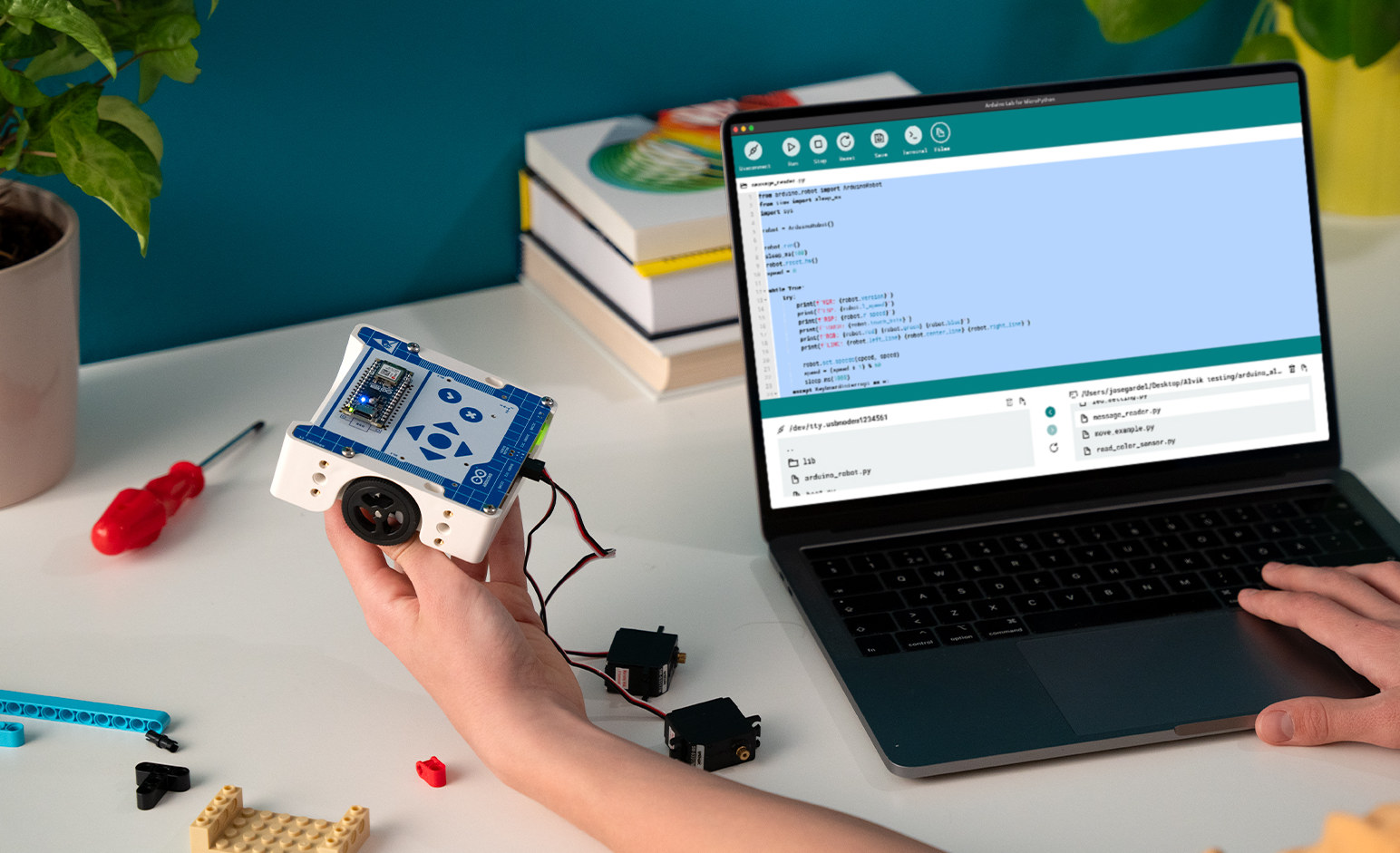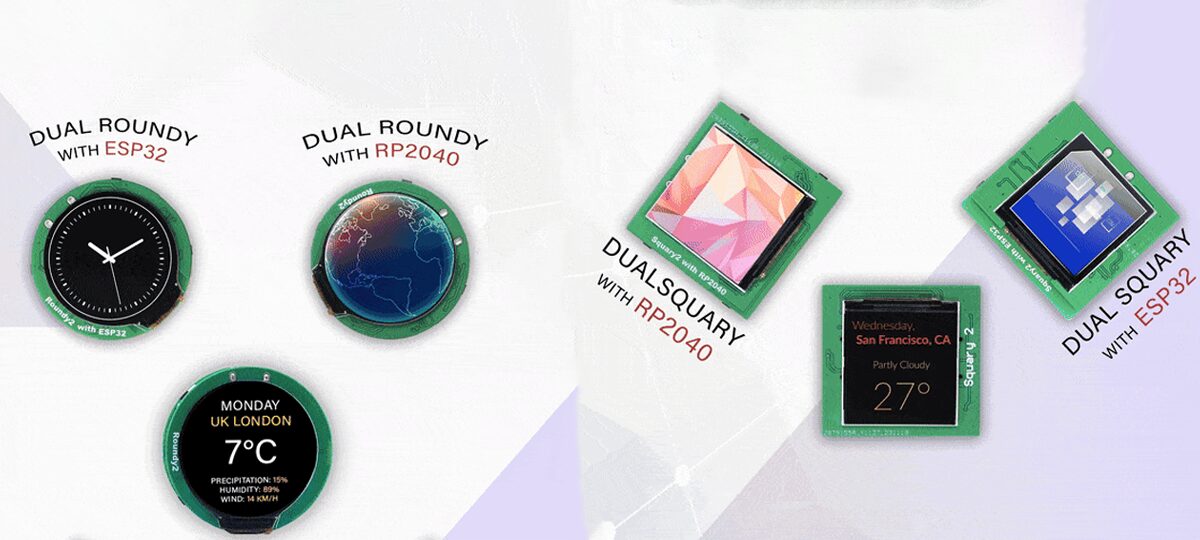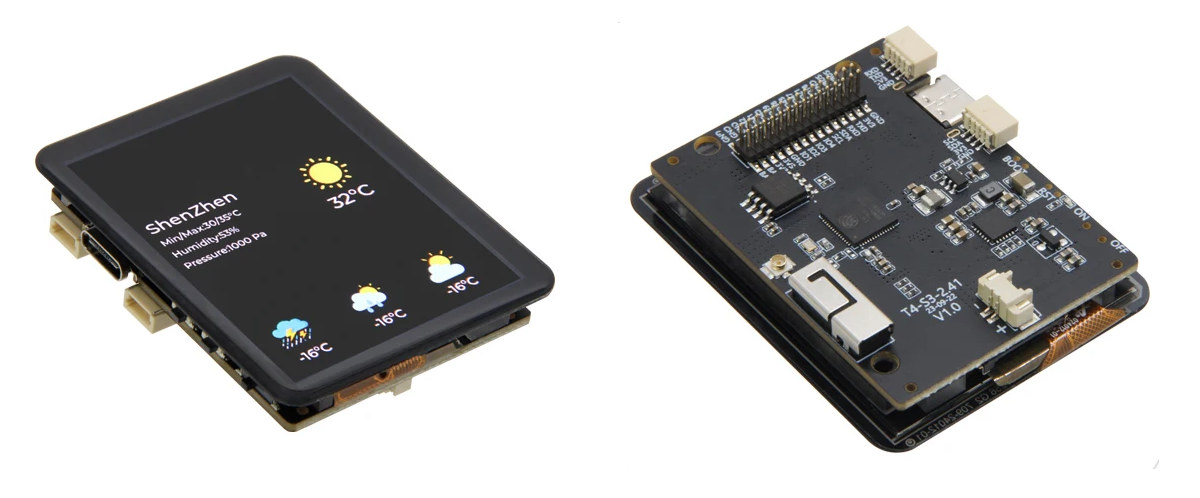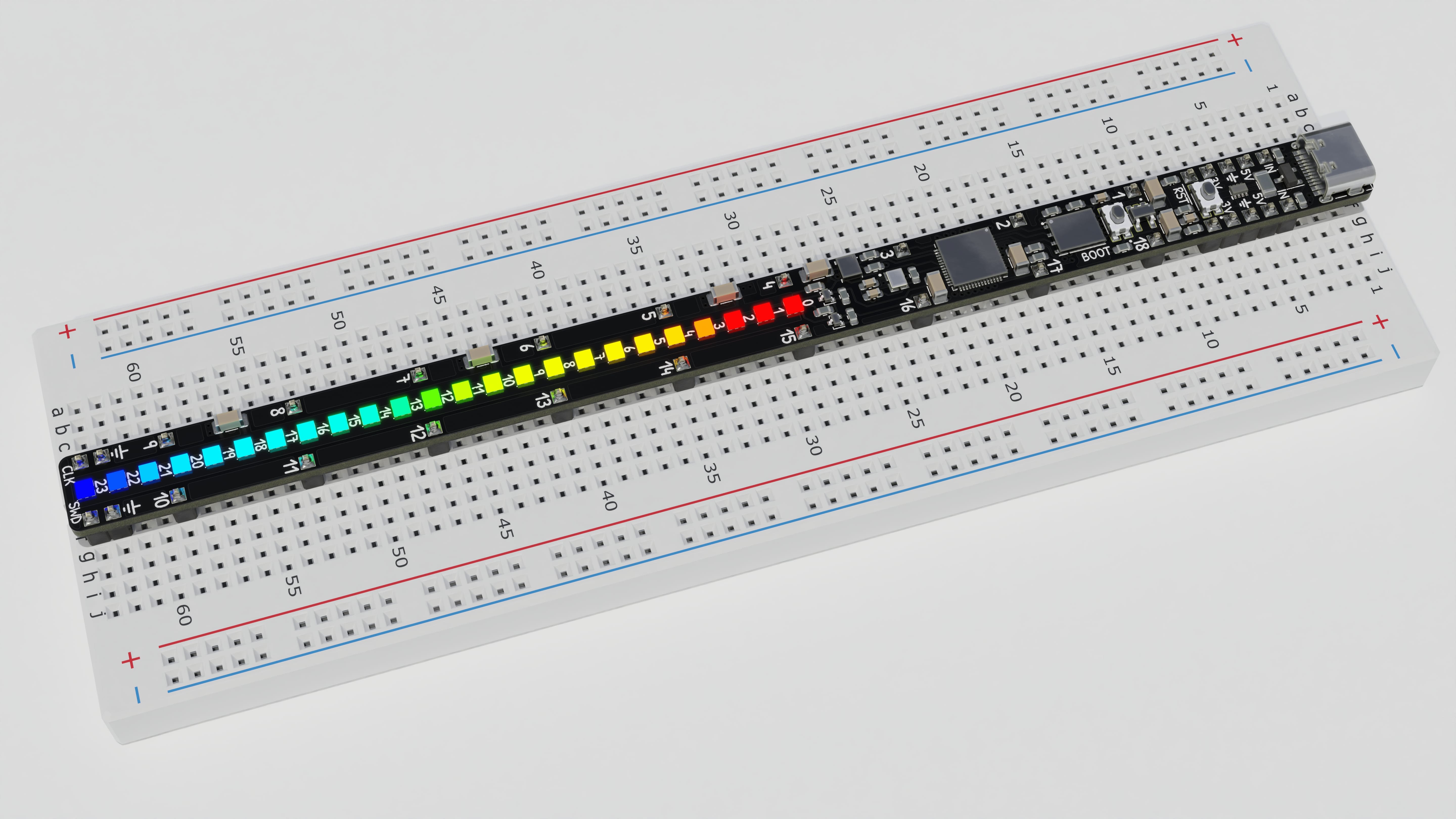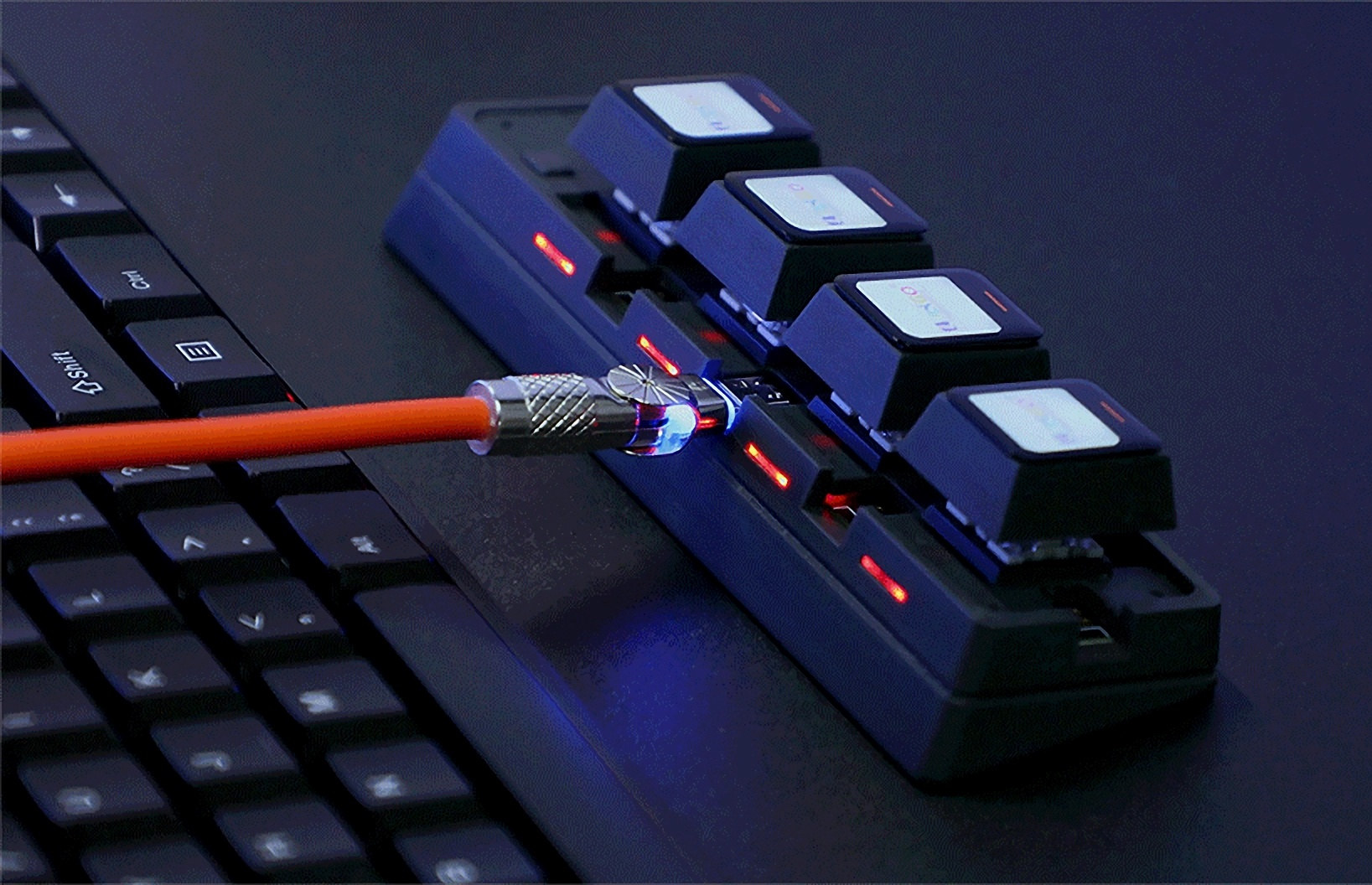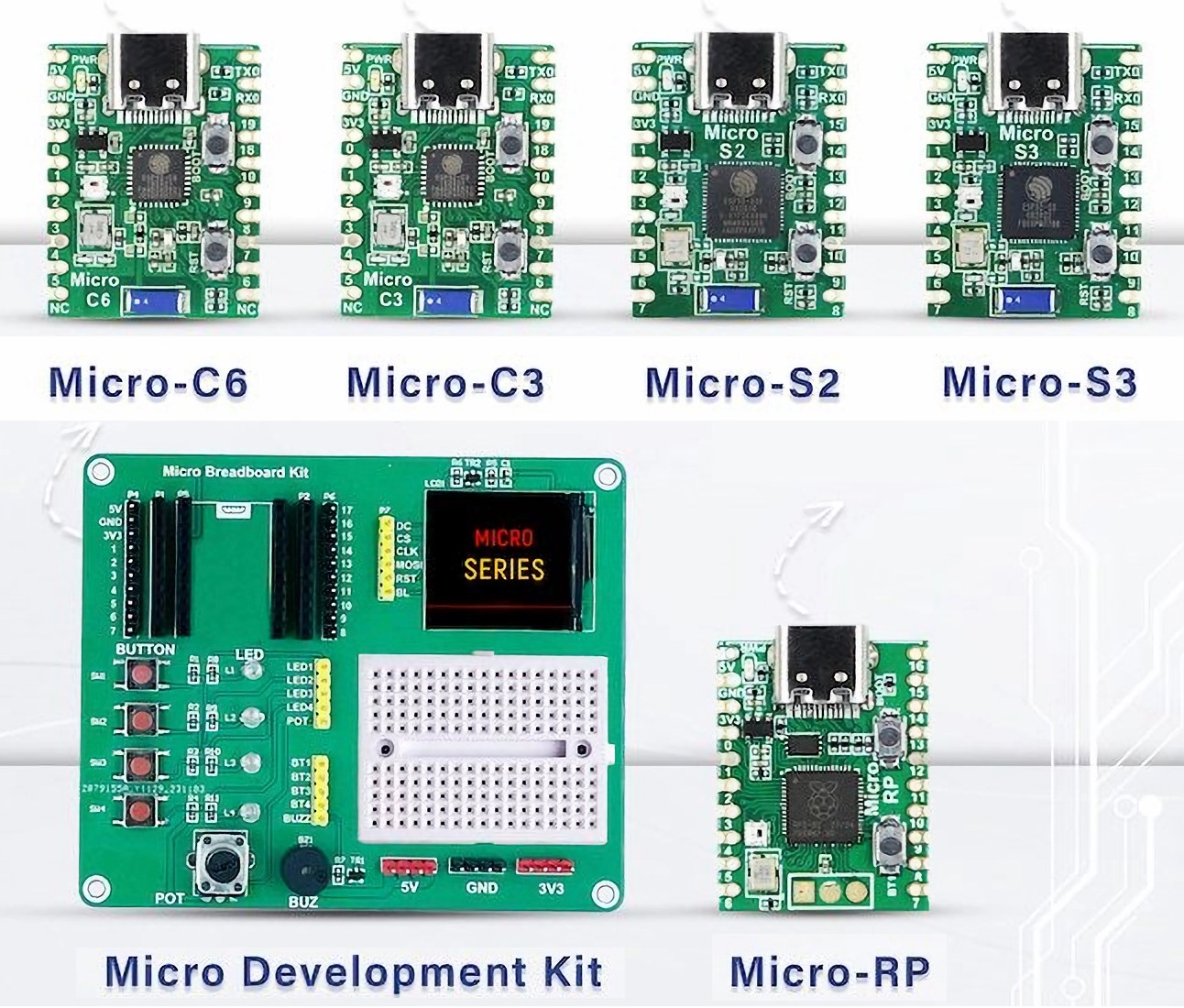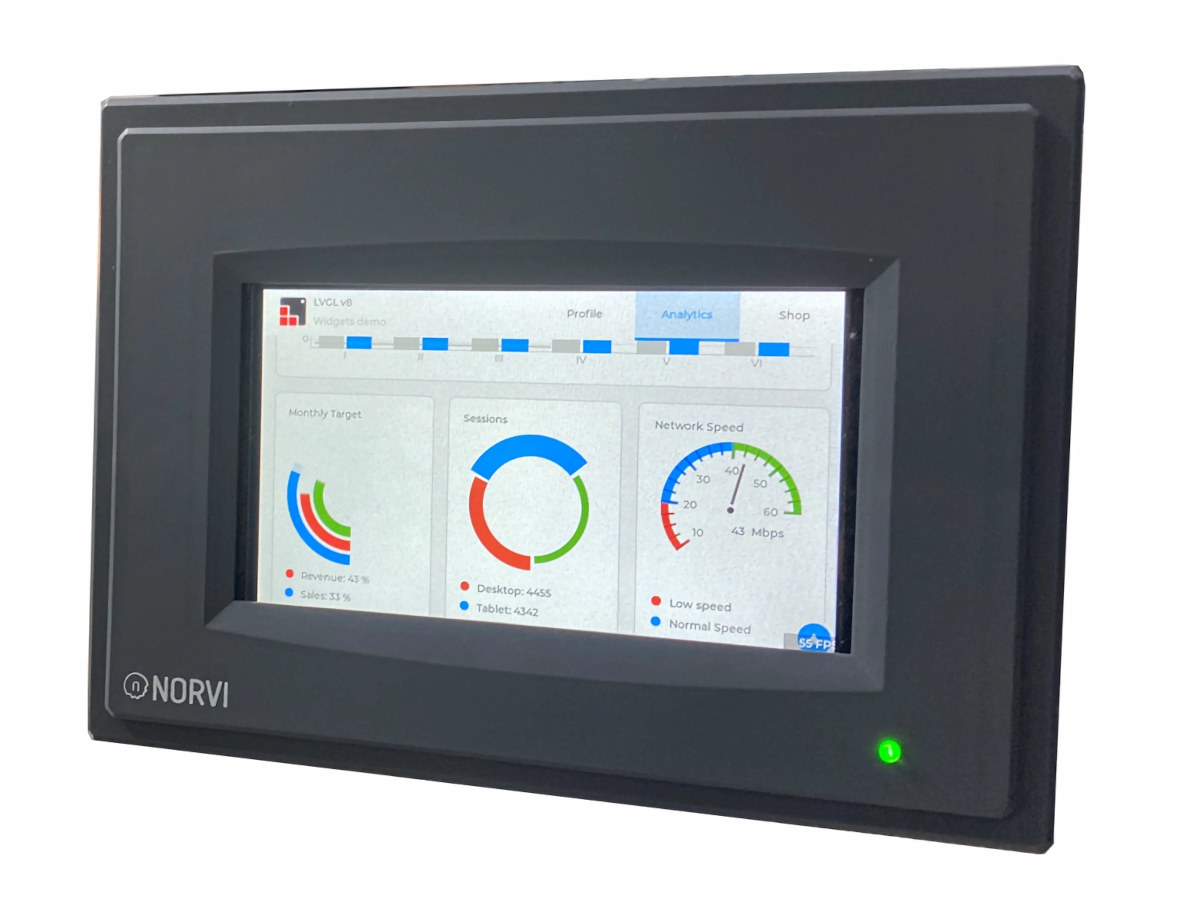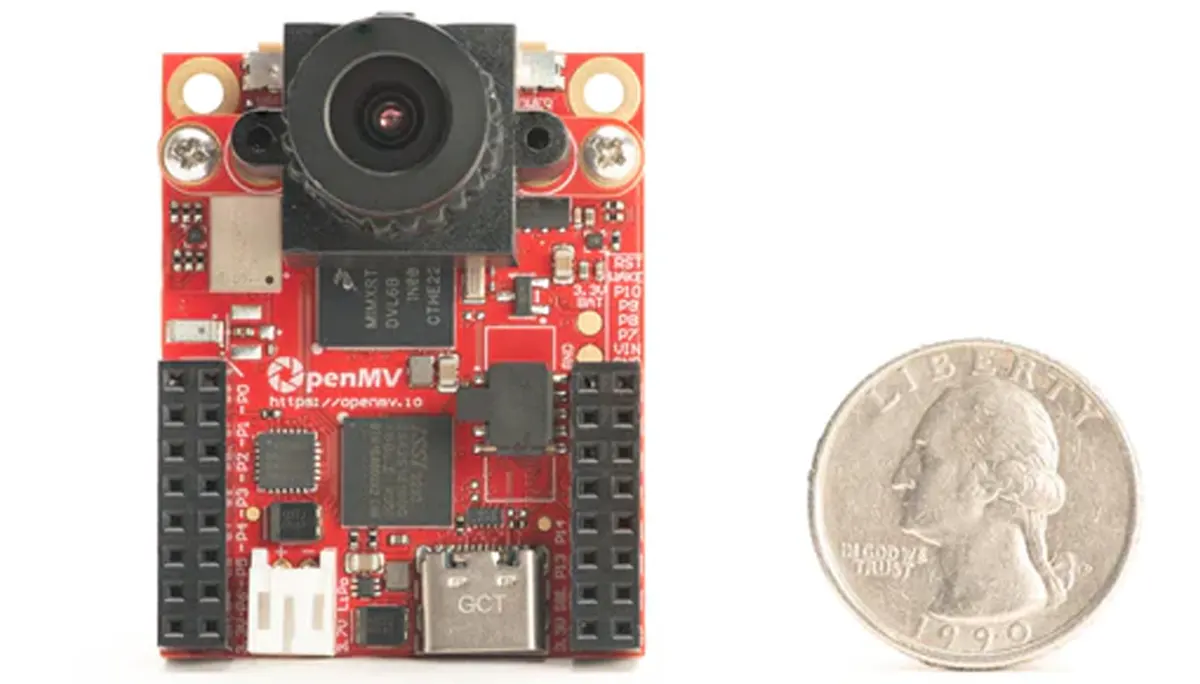Arduino Education’s Arduino Alvik is an upcoming 3-wheel educational robot that was just unveiled at the Bett 2024 show in London and designed to teach robotics, programming, and other STEAM subjects. The robot is based on an Arduino Nano ESP32 board and will come with a set of nineteen lessons designed by Arduino Education’s team in collaboration with teachers so that students can learn the basics of IoT, get started with MicroPython, and get themselves familiar with various physics and engineering concepts. The company has yet to provide the full specifications for the Alvik robot, but here’s what we know at this stage: Mainboard – Arduino Nano ESP32 2x wheels plus 1x ball wheel Sensors – “High-quality sensors” that include a ToF ranging sensor, line-following sensors, a 6-axis accelerometer & gyroscope, a proximity sensor, and color sensors. Expansion 2x Grove I2C connectors 2x Qwiic connectors 6-pin servo motor header for […]
SB’s Dual Roundy and Squary Displays are powered by RP2040 or ESP32-S3 microcontrollers (Crowdfunding)
SB-Components has launched Dual Roundy and Dual Squary display modules powered by Raspberry Pi RP2040 or ESP32-S3 microcontrollers. These compact modules feature a 6-DoF IMU, interchangeable displays, and multiple storage and connectivity options. The Dual Roundy is equipped with two 1.28-inch round displays, with a 240 x 240 resolution, and uses the GC9A01 display driver IC. In contrast, the Dual Squary features two 1.54-inch square displays with a 240 x 240 resolution but utilizes the ST7789 display driver. Both displays offer a choice between a Raspberry Pi RP2040 MCU and the ESP32-S3-WROOM-1 module catering to different needs in performance and wireless capabilities. We’ve previously explored other rounded displays like the MaTouch ESP32-S3, T-RGB ESP32-S3, and ESP32-S3 Round SPI TFT. We’ve also examined other products from SB Components such as the Cluster HAT, PiMecha, PiTalk 3G HAT, and Micro RP2040. Feel free to check these out for more interesting tech insights. […]
LILYGO T4-S3 board combines 2.41-inch AMOLED touchscreen display with ESP32-S3R8 microcontroller
LILYGO T4-S3 is yet another ESP32-S3 board with an integrated display, but the main difference here is the 2.41-inch AMOLED touchscreen display with brighter colors than typical TFT displays. It’s actually not the first ESP32-S3 board with an AMOLED display from LILYGO as we previously covered the T-Track and T-Display-S3 AMOLED boards from the company, but the new T4-S3 has a larger 2.41-inch display with touchscreen function and an aspect ratio that may make it more suitable for a wider range of HMI applications. LILYGO T4-S3 specifications: SoC – Espressif ESP32-S3R8 CPU – Dual-core Tensilica LX7 microcontroller up to 240 MHz with vector instructions for AI acceleration Memory – 8MB PSRAM Wireless – WiFi 4 and Bluetooth 5.0 LE + Mesh connectivity Storage – 16MB SPI flash, MicroSD card socket Display – 2.41-inch RGB AMOLED touchscreen display with 600×450 resolution (QSPI controller) with 800cd/m2 brightness, 36.2 x 48.96mm active […]
Raspberry Breadstick – A RP2040-based development board in a quirky form factor
The Raspberry Breadstick is a breadstick-shaped development board that is designed for ease of use. Unlike other development boards, the Breadstick is built to fit directly on your breadboard and interface with the other electronic components in your project without the need for lengthy jumper wires. It serves to deliver a prototype that is neat, straightforward, and easy to troubleshoot. It is based on Raspberry Pi’s debut microcontroller, the RP2040, which is the same MCU chip that powers the Raspberry Pi Pico and several other boards. We recently covered the Waveshare RP2040-PiZero that comes in the Pi Zero’s form factor. The RP2040 is cheap and supports C/C++, MicroPython, and CircuitPython. The Breadstick has other interesting features such as a lineup of 24 addressable RGB LEDs with fast refresh rates, a 6-axis inertial measurement unit for collecting acceleration and rotation data, as well as 16MB of external flash storage for your […]
T-Keyboard-S3 4-key USB mechanical keyboard features keycaps with 0.85-inch color display
LILYGO T-Keyboard-S3 is an ESP32-S3 powered USB mechanical keyboard with four keys each equipped with a keycap featuring a 0.85-inch 128×128 color display to show different icons or characters. We have already covered several programmable small mechanical keyboards/keypads or macropads, so the first time I saw the T-Keyboard-S3 I did not think much of it until I read the $65 price tag on Aliexpress which I found excessive for this type of device. That’s only until I realized that each resin keycap has its own color display that the price made sense, and it makes quite a versatile macropad as you could easily program multiple layouts depending on the use case. T-Keyboard-S3 specifications: Wireless module ESP32-S3-WROOM-1 MCU – ESP32-S3R8 dual-core LX7 microprocessor @ up to 240 MHz with Vector extension for machine learning Memory – 8MB PSRAM Storage – 16MB SPI flash Connectivity – WiFi 4 and Bluetooth 5 with LE/Mesh […]
Microflex MCUs – Tiny USB development boards based on ESP32-S3, ESP32-S2, ESP32-C3, ESP32-C6, or Raspberry Pi RP2040 (Crowdfunding)
SB Components is back with yet another crowdfunding campaign this time with the Microflex MCUs USB development boards all with the same tiny form factor and offered with a choice of five microcontrollers namely Raspberry Pi RP2040, ESP32-S3, ESP32-S2, ESP32-C3, or ESP32-C6. Microflex MCUs share the same layout with a USB-C port for power and programming, a built-in RGB LED, two buttons for Boot and Reset/User, and two rows of 10-pin with through and castellated holes to access the GPIOs and power signals such as 5V, 3.3V, and GND. But they differ in terms of the processor used, wireless features, and available I/Os as shown in the table below which sadly lacks any information about the flash and eventual PSRAM… The illustration below includes some more details for the Micro-C6 with the main components, ports, and a pinout diagram. Programming the firmware for the ESP32-series can be done through the […]
NORVI ESP-HMI-5C ESP32-based HMI features a 5-inch resistive touchscreen display
NORVI ESP32-based human-machine interface (HMI) solution features a 5-inch LCD with a resistive touchscreen driven by an ESP32-S3 wireless module and support for the LVGL library. NORVI previously brought us some headless ENET industrial controllers including some with Ethernet beside the WiFi connectivity built into the ESP32 microcontroller, but the NORVI HMI device is the first product from the company with a proper display suitable for HMI applications. NORVI HMI (ESP-HMI-5C) specifications: Wireless module ESP32-S3-WROOM32-1-N16R8 MCU – ESP32-S3 dual-core LX7 microprocessor @ up to 240 MHz with Vector extension for machine learning, 512 KB SRAM Memory – 8MB octal SPI PSRAM Storage – 16MB flash Connectivity – WiFi 4 and Bluetooth 5 with LE/Mesh PCB antenna Storage – MicroSD card slot (SPI interface) Display – 5-inch LCD Display with Resistive Touch Audio – Built-in Buzzer Communication interfaces – Ethernet (W5500) and RS485 I/Os 4x digital inputs – Range 18V to 32V […]
OpenMV CAM RT1062 camera for machine vision is programmable with MicroPython
Following the success of the OpenMV Cam H7 and the original OpenMV VGA Camera, OpenMV recently launched the OpenMV CAM RT1062 powered by NXP’s RT1060 processor. This new camera module integrates a range of features, including a high-speed USB-C (480Mbps) interface, an accelerometer, and a LiPo connector for portability. Similar to its predecessor, this camera module also features a removable camera system, and it is built around the OV5640 image sensor which is more powerful in terms of resolution and versatility. However, the previous Omnivision OV7725 sensor, used in the OpenMV Cam H7 has a far superior frame rate and low-light performance. OpenMV provides a Generic Python Interface Library for USB and WiFi Comms and an Arduino Interface Library for I2C, SPI, CAN, and UART Comms which can be used to interface your OpenMV Cam to other systems. To program the board, you can use MicroPython 3 with OpenMV IDE, […]


